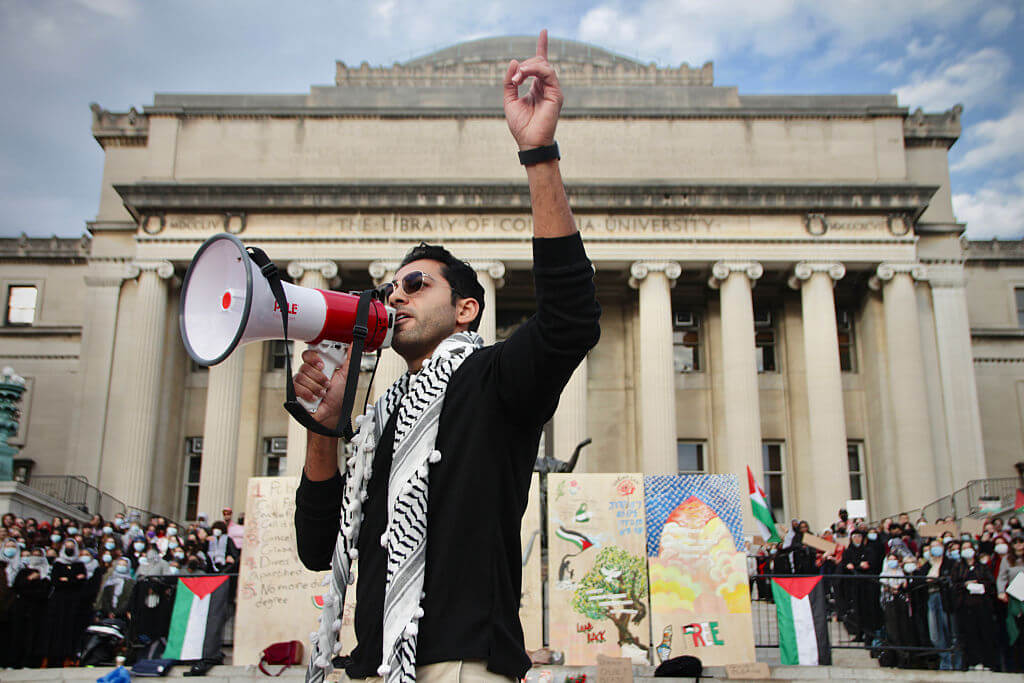Nazi collaborator monuments in Slovakia
Jozef Tiso, who deported tens of thousands of Slovakian Jews, is honored with plaques in several cities and towns

Left: Ferdinand Ďurčanský, fourth from left, with Jozef Tiso, third from left (Alchetron). Right: Ďurčanský bust, Rajec (Wikimedia Commons). Image by Forward collage
This list is part of an ongoing investigative project the Forward first published in January 2021 documenting hundreds of monuments around the world to people involved in the Holocaust. We are continuing to update each country’s list; if you know of any not included here, or of statues that have been removed or streets renamed, please email [email protected], subject line: Nazi monument project.
Čakajovce — A statue of Jozef Tiso (1887–1947), the Slovakian priest hanged for war crimes due to his eager deportation of tens of thousands of Slovakian Jews who were slaughtered by the Nazis. Today, Tiso is venerated by Slovakia’s far-right.
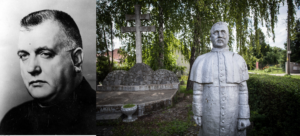
See the New York Times report on the surge of neo-fascism across Europe. (Thank you to Jozef Jakubco of the SME daily for the statue photo.)
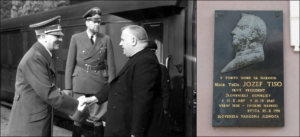
Bytča and five other towns — A plaque honoring Tiso in his birthplace (story in the New York Times). Tiso also has plaques in Hlboké nad Váhom, Oščadnica, Rajec and two on the Catholic House in Žilina (below left, Google translation here) as well as a street in Varín (below right). See report in the Slovak Spectator and coverage of the effort to rename Tiso Street in My Žilina (Google translation here).
Above left, Tiso meeting with Hitler in Berlin, October 1, 1941. At a minimum estimate, 68,000 out of Slovakia’s 89,000 Jews were murdered in the Holocaust, mostly via deportations to concentration camps. (Thanks to Michal Filek of My Žilinské noviny for the Varín street photo.)

***
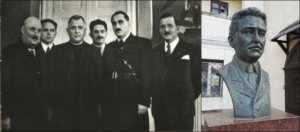
Rajec — A bust of nationalist leader Ferdinand Ďurčanský (1906–1974), erected in 2011. Ďurčanský, who was deemed complicit in the death of Jews by the UN, escaped to Argentina and was then admitted into Canada. See report in the Slovak Spectator. Above left, Ďurčanský (center right) with Jozef Tiso and others.
Ďurčanský, like so many ex-Nazi allies, enjoyed the post-war protection of Western intelligence. The U.S. State Department allowed him to freely travel in the U.S.; according to the Anti-Defamation League, the State Department’s rationale for granting Ďurčanský an immigrant visa was: “Membership in or affiliation with the defunct Nazi Party in itself no longer constitutes a ground of ineligibility.”
Below, supporters of the neo-Nazi People’s Party Our Slovakia (LSNS), at an anti-refugee rally in 2015; the party’s name and logo (on the green banner) are based on Tiso’s Slovak People’s Party. In 2016, LSNS founder, the openly neo-Nazi Marian Kotleba shocked Europe when he was elected to parliament; in 2019, LSNS increased their representation in parliament. “Slovakia Is Not Africa” reads the LSNS banner.

Note: the entry below was added during the January 2022 project update.
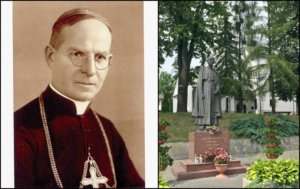
Námestovo and ten other locations – Námestovo honors Bishop Ján Vojtaššák (1877–1965) with a statue as well as a plaque on the town’s wall of heroes. Vojtaššák was deputy chairman of the Slovak State Council, the senate of the Nazi puppet state of Jozef Tiso. In 1942, the council greenlit the extermination of Slovakia’s Jews by passing legislation stripping them of citizenship and permitting their deportation. That year alone, Slovak collaborators rounded up at least 57,000 Jews who were sent to death camps; no more than a few hundred survived.
After the war, Slovakia became part of Czechoslovakia, a Soviet puppet state. The Communist dictatorship indicted Vojtaššák, who resisted Communist attempts to control church life, in a show trial; the bishop was tortured and spent over a decade in prisons. Vojtaššák’s whitewashers try to cover up his complicity in the Holocaust by focusing on his post-war persecution. In other words, Vojtaššák was a collaborator under the Nazis who was then persecuted by the Communists; revisionists speak solely about the latter while conveniently ignoring the former. It’s an extraordinarily common tactic used to rebrand Nazi collaborators across Eastern Europe.
Both Israeli and Slovak Jews protested when the Vatican considered granting Vojtaššák sainthood (the issue remains ongoing); notably, in 2021 Pope Francis made a poignant speech addressing the Catholic church’s complicity in the Holocaust in Slovakia.
Vojtaššák also has a bust in Ružomberok; plaques in Ilava, Nitra and Stankovany; a street and plaque in Žilina; a square (with statue) and street in Zákamenné; a street in Lendak; a square in Dolný Kubín; a school in Levoča; and a seminary (with plaque) and memorial stone in Spišská Kapitula. Below left, Vojtaššák with fellow priest and Hitler puppet Jozef Tiso (see earlier entry) at the inaugural meeting of the Slovak State Council. See coverage in the SME daily (Google translation here). Below right, Jews deported from Stropkov, 1942.

The Forward is free to read, but it isn’t free to produce

I hope you appreciated this article. Before you go, I’d like to ask you to please support the Forward.
Now more than ever, American Jews need independent news they can trust, with reporting driven by truth, not ideology. We serve you, not any ideological agenda.
At a time when other newsrooms are closing or cutting back, the Forward has removed its paywall and invested additional resources to report on the ground from Israel and around the U.S. on the impact of the war, rising antisemitism and polarized discourse.
This is a great time to support independent Jewish journalism you rely on. Make a gift today!
— Rachel Fishman Feddersen, Publisher and CEO
Support our mission to tell the Jewish story fully and fairly.
Most Popular
- 1

Fast Forward Ye debuts ‘Heil Hitler’ music video that includes a sample of a Hitler speech
- 2

Opinion It looks like Israel totally underestimated Trump
- 3

Culture Cardinals are Catholic, not Jewish — so why do they all wear yarmulkes?
- 4

Fast Forward Student suspended for ‘F— the Jews’ video defends himself on antisemitic podcast
In Case You Missed It
-

Culture How one Jewish woman fought the Nazis — and helped found a new Italian republic
-

Opinion It looks like Israel totally underestimated Trump
-
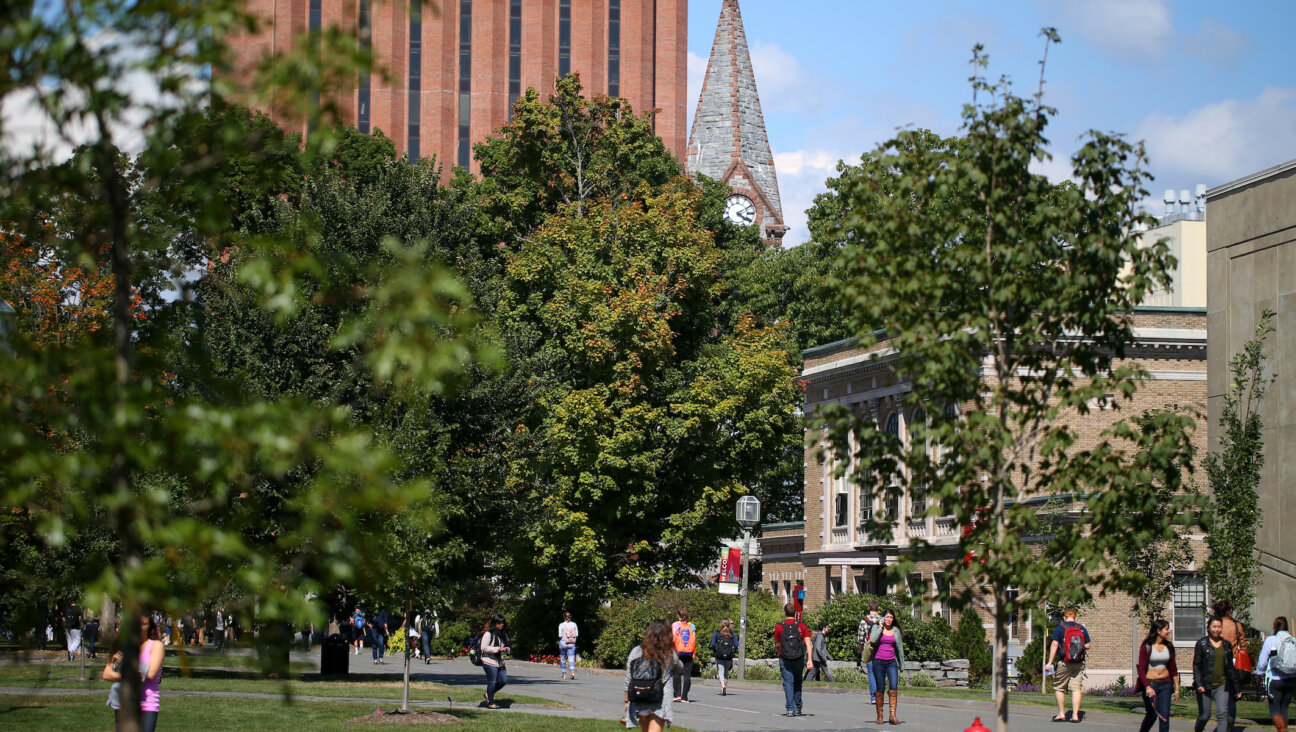
Fast Forward Betar ‘almost exclusively triggered’ former student’s detention, judge says
-

Fast Forward ‘Honey, he’s had enough of you’: Trump’s Middle East moves increasingly appear to sideline Israel
-
Shop the Forward Store
100% of profits support our journalism
Republish This Story
Please read before republishing
We’re happy to make this story available to republish for free, unless it originated with JTA, Haaretz or another publication (as indicated on the article) and as long as you follow our guidelines.
You must comply with the following:
- Credit the Forward
- Retain our pixel
- Preserve our canonical link in Google search
- Add a noindex tag in Google search
See our full guidelines for more information, and this guide for detail about canonical URLs.
To republish, copy the HTML by clicking on the yellow button to the right; it includes our tracking pixel, all paragraph styles and hyperlinks, the author byline and credit to the Forward. It does not include images; to avoid copyright violations, you must add them manually, following our guidelines. Please email us at [email protected], subject line “republish,” with any questions or to let us know what stories you’re picking up.









